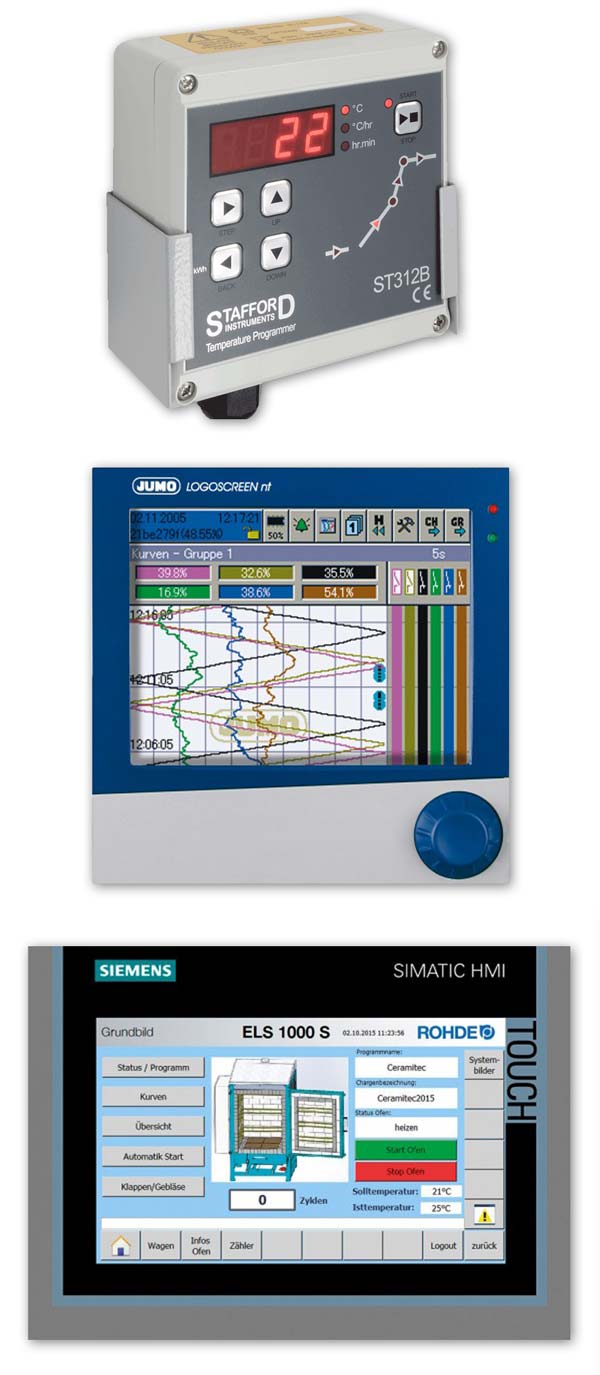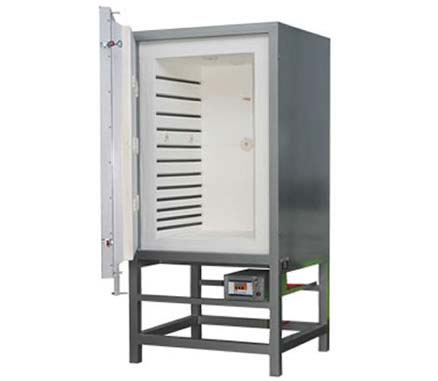Basic kiln technology has been relatively slow to change. The fundamental things a kiln has to do – applying heat-work to clay objects – is a pretty uncomplicated thing to do. But in an interview with Brad Hunt we found out that there are some impressive changes to the designs and operating costs of electric kilns, so much so that Brad now runs one of his kilns from solar power collected from his studio roof. Here is more of that interview.
From your experience, what kinds of kilns are most popular today?
Electric kilns with programmable controllers are by far the most popular kilns because people like the ease of use. Gas kilns are now a specialist purchase and of course raku and wood-fired kilns are even more specialist. We find that beginners, schools and clubs generally like the ease, predictability and safety of an electric kiln.
What are the trends in modern electric kilns?
The kiln is the most critical piece of equipment for ceramic artists and potters and the focus of a great deal of angst when they are unreliable or breakdown. So choosing the right kiln is important. We have noticed that there are some clear trends in the kind of kilns that are being bought.
Being energy efficient is increasingly important as power prices rise. By choosing the right kiln, you can change the economics of your ceramics practice. For example a modern fibreboard kiln will save you 60% of your firing costs over traditional kilns with brick insulation – so a firing that costs $100 in a traditional kiln costs only $40 in a modern efficient kiln.
We fire kilns all the time and the difference in power costs means that we can pay for an entirely new fibreboard kiln in only four years, just from the savings in power bills when compared to a traditional kiln. We even run smaller kilns from roof-top solar panels, significantly reducing our power bills. It’s savings like these that means 85% of our new kiln sales are fibreboard kilns.
Cost of installation is also a factor for many people. Modern aluminium framed fibreboard kilns are less than half the weight of a brick-based kiln making it easier to transport and install. For example a 12 cubic foot traditional kiln is 560 kg while the modern fibreboard kiln is just 250 kg. It means the difference between a couple of people moving a kiln and the need to get in a crane or forklift – which reduces cost of installing or moving a kiln and makes everything easier to manage.
We also find that people are also looking for easy to program controllers that they can set and forget. There is a revolution in controllers going on at the minute with innovative manufacturers trying to build the user interface of the controller to be more like a mobile-phone app. These controllers are wi-fi connected and like a mobile phone app, allows users to remotely monitor and control the kiln using their phone.
Who are the major kiln suppliers in Australia?
There are many manufacturers and importers of kilns in Australia right now. This is a list of the main ones: Woodrow Kilns, Tetlow Furnaces, GE & GE Kilns, Interdec Australia, Ceramicraft, Gameco, Reward Ceramic Products W.A., Fired Art Australia and Ceramix Australia.
What are the three most important things you need to consider when investing in a kiln?
First you should research the amount of power that you have available to you before you go shopping. Then remember it’s usually, the more you pay the longer the kiln will last. Finally you should spend some time learning about the warranty terms and conditions.
Is buying a second-hand kiln a good option?
Second hand kilns are an option if it is in good condition and you know it’s working properly. Remember you have to pick it up, transport it, install it and then test fire it at various temperatures and find if it is working properly and if it has quirks like hot-spots, cool zones, or controller or pyrometer issues. The last second hand kiln I bought was a lemon. I ruined so much work in it that it would have been cheaper to take it to the tip!
Also you need to look at the running costs compared to those of a new kiln and factor in the price of any repairs that might be needed to get the kiln up to standard.
Have you any advice for someone installing a new kiln?
You must be aware that kilns can emit significant amounts of corrosive and toxic fumes. Proper ventilation is a must if you want to protect anything metal (like your corrugated iron roof or walls) and your own health. If needed, attach a properly designed venting system if you need to work close by your kiln.
What tests should someone run on a new kiln?
You need to know the exact temperature in the various parts of the kiln. When you are starting off with a new kiln, use cones to find out what precisely is happening inside your kiln.
What developments and trends are there in kiln controllers?
The new kiln controllers that are coming out are fabulous:
- Infinite stages and programs
- Colour touch-screens
- Wi-Fi connectability
- Updates on your firing cycle by email
- Some can even warn you when you need to replace an element.
Do kilns require regular maintenance & if so what sort of things need to be scheduled?
Generally kilns do not require regular maintenance but things need to be fixed when something goes amiss. The biggest issues are the heating elements which need to be replaced when broken or when the kiln is not reaching higher temperatures.
What size and style of kiln would you recommend for a beginner, a serious ceramic artist and a professional production potter?
A beginner would normally start with a kiln internally 40 – 80 Litres (1.5 to 3 cubic feet).
Clubs, schools and production potters normally need kilns of 300 – 420 litres (10 – 15 cubic feet) and still need the smaller kiln for tests and odd jobs.
Any advice on transporting and installing kilns?
Take care to pack out the inside of the kiln for transporting so you don’t damage the insulation. Bags of shredded paper are good for this.
Tape a box or Styrofoam around the thermocouple as it is fragile and valuable.
When locating your kiln in the studio, keep it 30 cm away from walls or anything combustible. AND . . . bear in mind that the corrosive vapour that comes out of your kiln is dangerous to your health and will rust anything steel or iron unless the kiln is properly vented.



